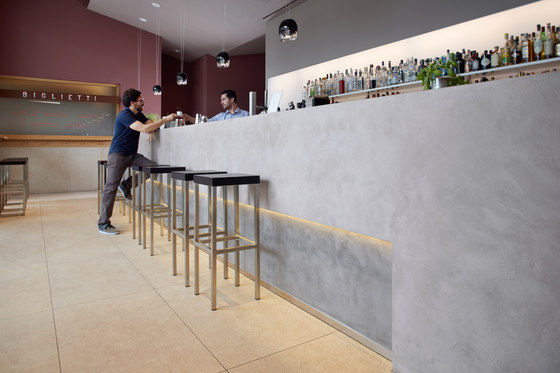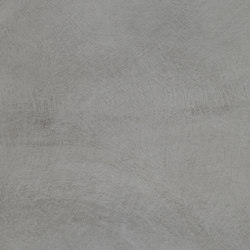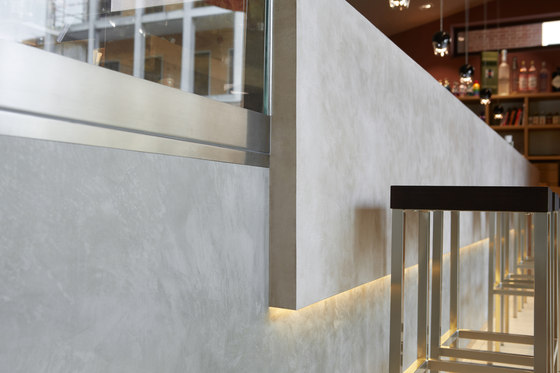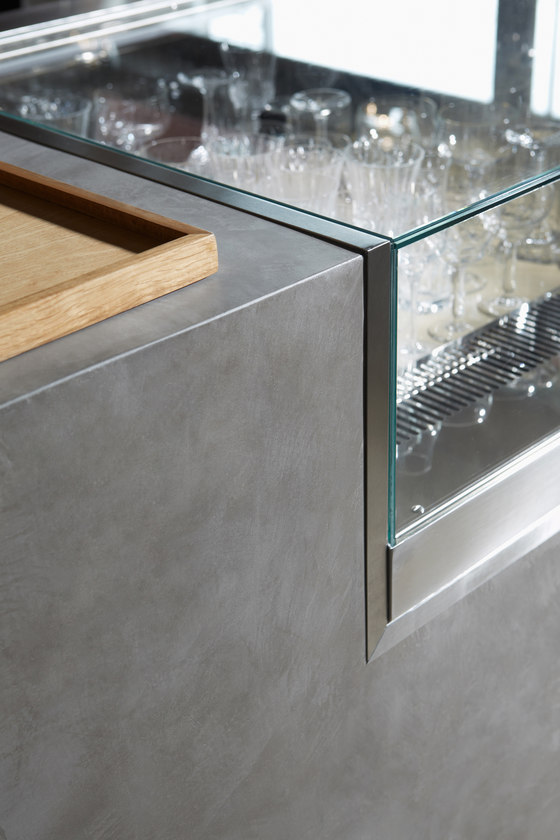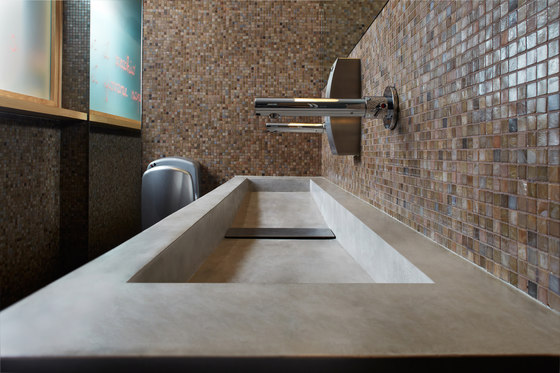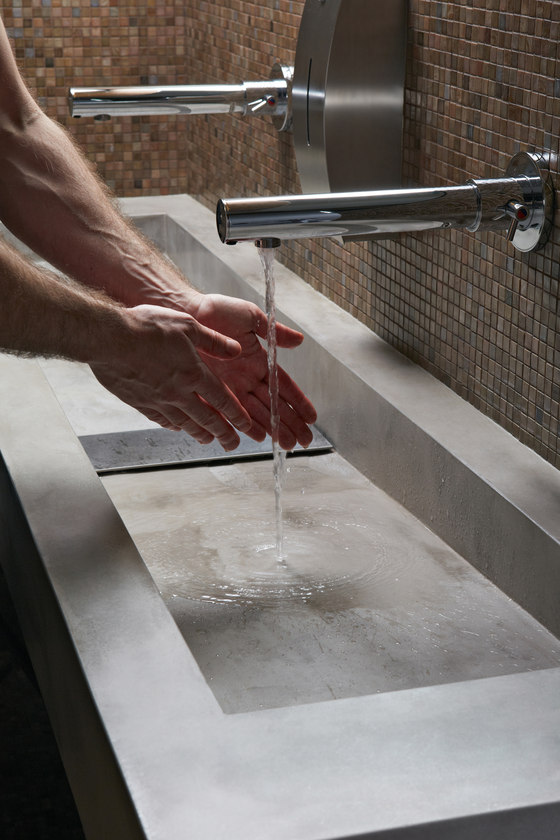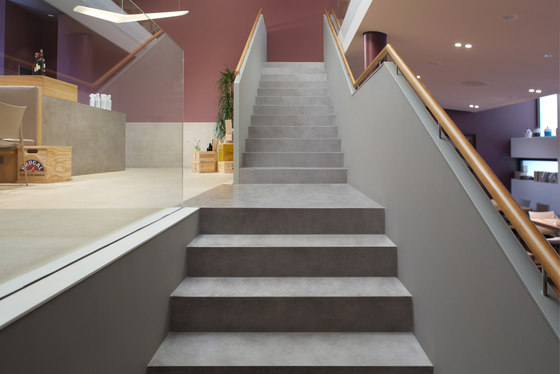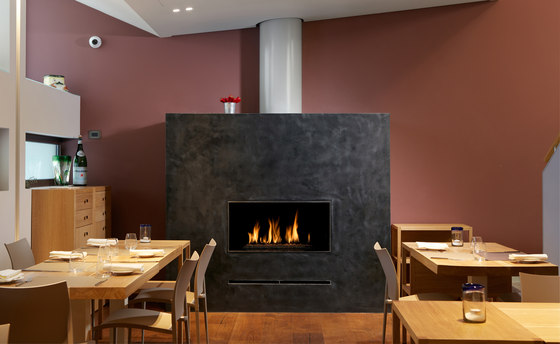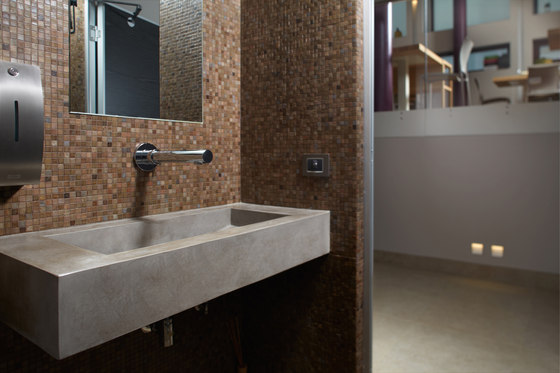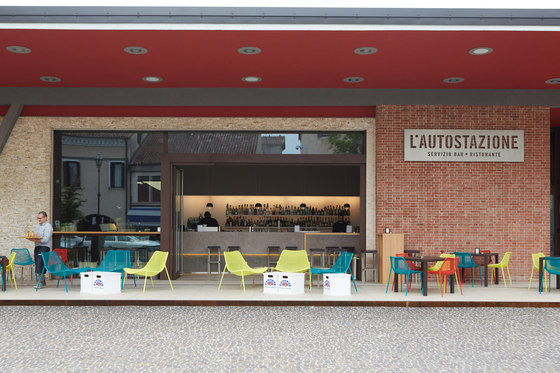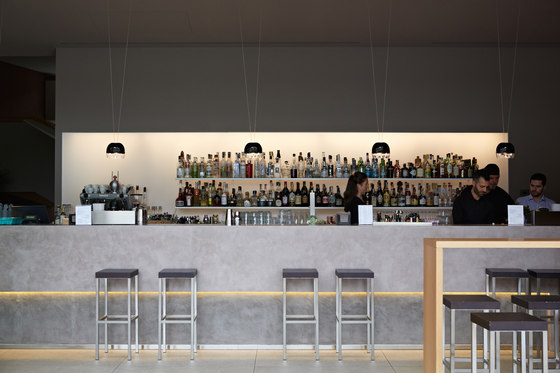Painstaking restoration works have returned an old Paduan building to its former splendour, creating space for a modern bar-restaurant where tradition thrives alongside the contemporary and the innovative materials used blend perfectly with the context.
Overlooking Piazza Martiri del Grappa, the Cittadella Municipality Bus Station was built between 1953 and 1955 to the design of the Paduan architect and engineer, Giulio Brunetta. A fine example of late Italian rationalism, the building housed the waiting room, the ticket office and the station bar as well as the rooms used by the Telve telephone company and the public toilets in the basement.
Before the restoration, the Cittadella bus station had fallen into a state of abandonment. As part of a wider upgrading of the area of the former bus station, painstaking restoration works were carried in full respect of the typical architectural features of the property. The restoration was the work of the UdpA (Ufficio di Progettazione Architettonica – Architectural Design Office) studio of the architects Andrea Rizza and Alessandro Simioni.
The intervention led to the creation of a bar-restaurant and a small commercial unit, emphasising the building’s inverse roof ridge and, especially in the bar-restaurant, the strong relationship with the Piazza Martiri del Grappa in front of the premises (upgraded for pedestrian use by the same studio in 2012). The building was also completely rearranged internally by dividing it into four staggered floors connected by a stairwell that creates a fluid space, while all the details and finishing of the elevations were retained, as laid down by the Superintendency.
The stairs, the central feature of the interior layout was entirely covered in Ideal Work Microtopping, coating that is able to create the natural tactile and visual effect of concrete. One of the features of the premises is the bar counter, a full 12 metres long and in close relationship with the exterior, specifically the square in front, accentuated by the concealed window frame. The bar counter was completely covered in Microtopping Ideal Work; the innovative solution was originally only intended to be used to cover the stairs, but finding favour with the designers, it was used on the fireplace, two washbasins in the public toilets and the large bar counter. The coating blends perfectly with the minimalist contemporary design of the interiors.
Alessandro Simioni explained the reasons for using Microtopping: “The use of this material, with its clean, simple appearance, gave us the chance to avoid ‘disturbing’ the already rich collection of material outside the building; this was already covered in exposed brickwork, tiles and mosaics in deliberate contrast to the simple finishing of the interior, both from the formal and material point of view. The restoration was conducted in full compliance with the building constraints and its image, but made use of contemporary features (and finishing materials like Microtopping) as a reminder of our era.”
The works were carried out in several stages and no particular problems were encountered, according to Luca Pegorin, an Ideal Work authorised installer. “The material’s great ductility – it can applied horizontally and vertically – allowed us to create the various furnishing accessories without encountering any particular problems.”
Microtopping in Charcoal colour was used for the stairs and the washbasins; for the bar counter, Chocolate and Charcoal, while the fireplace was created in Black. Water repellent treatment was applied to the washbasins to make the surfaces impermeable. The total surface covered was around 200 square metres.
Fully restored to pristine condition, the Autostazione bar-restaurant opened it doors on August 30; the establishment offers the traditional cuisine of the Veneto and can seat 50 diners.
architect: Andrea Rizza and Alessandro Simioni

